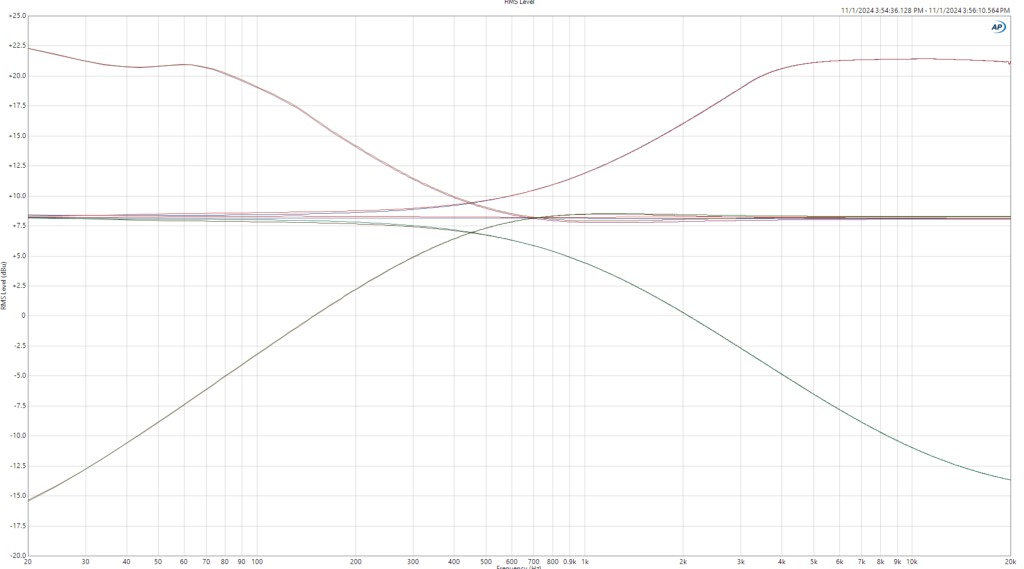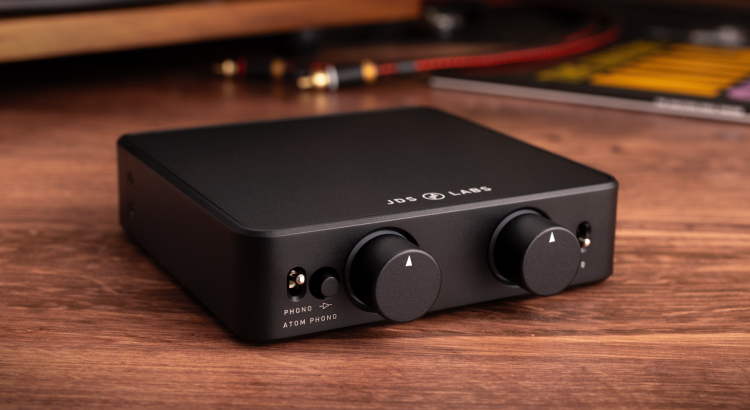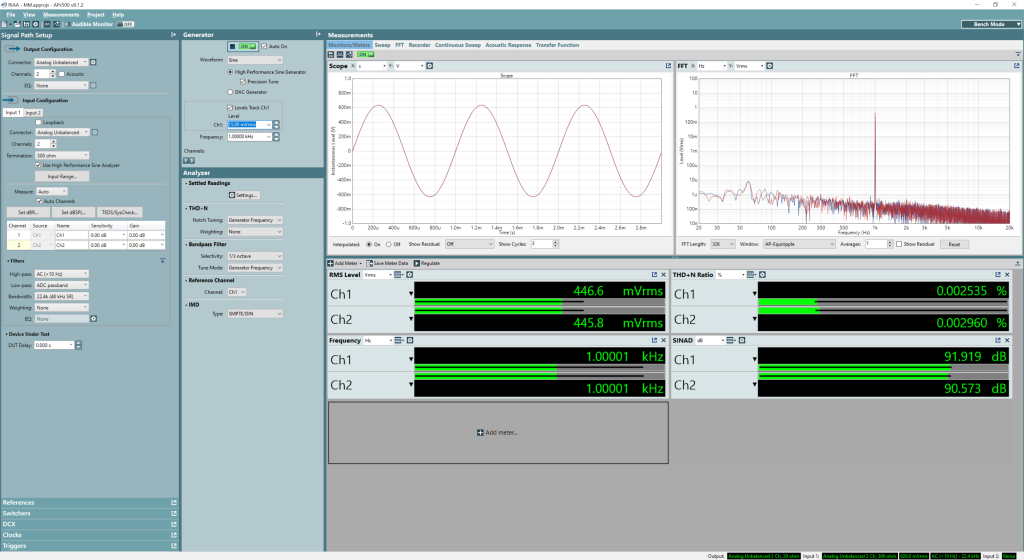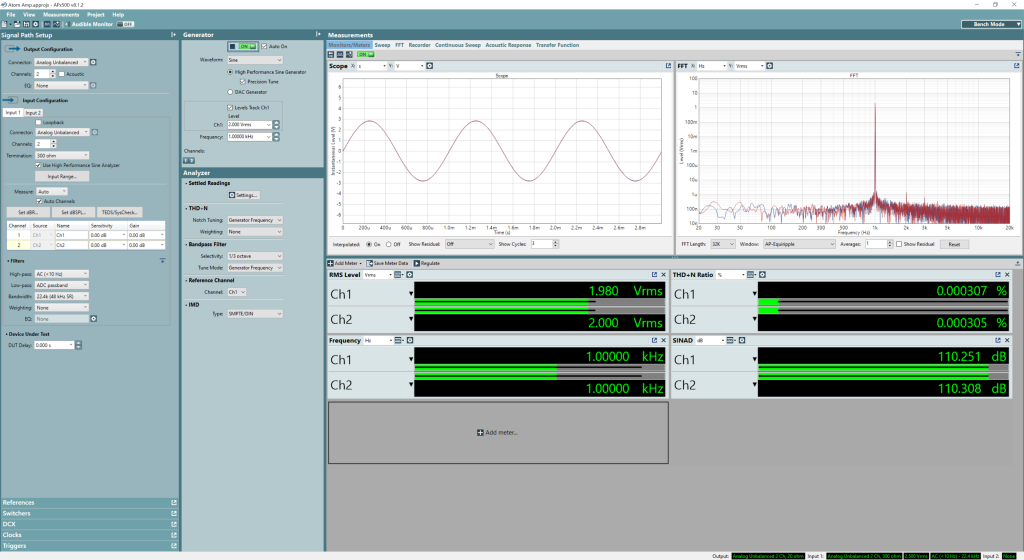Those new to vinyl are often puzzled by the need for a phono preamp. Atom Phono solves two common issues: It’s a strong RIAA phono preamp and clean tone control in one. At high gain, Atom Phono delivers audio up to 4x louder than most integrated phono preamps. Its flexible bypass toggles let you use it as an EQ, a phono preamp, both, or bypass it entirely. With features like a subsonic filter, selectable 30 or 40 dB gain, and impressively low THD and noise, Atom Phono offers exactly what you need from an RIAA preamp.
Tone Controls?
HiFi is evolving into an ever more digital era, and we recognize that anyone serious about equalization has limited use for a 3-band equalizer like the now retired Subjective3. When using a DAC, high-performance equalization is accomplished with a parametric, multi-band EQ app.
In a 3-band EQ, a fixed “mids” knob is unlikely to correspond to any useful frequency that you may wish to alter. The same holds true for the inner bands of 4- or even 5-band analog EQs: Bass and treble knobs get used, while non-parametric mids are often left alone. Douglas Self agrees:
“It must be said at once that middle controls, while useful in mixers, are of very little value in a preamplifier. If the middle frequency is fixed, then the chances that this frequency and its associated Q correspond with room shortcomings or loudspeaker [driver] problems are remote in the extreme.“
A 2-band EQ is simply a “tone control”, giving you a convenient way to adjust bass and treble. Thus, Atom Phono replaces Subjective3 for those seeking dedicated bass and treble adjustment for their Atom 2 stack.
Hardware
Atom Phono’s RIAA preamp leverages paralleled passives to minimize tolerance errors. Output from its subsonic filter passes to a gain stage to optionally double the turntable signal from 30 dB to 40 dB.
The tone control is a low-noise adaptation of a Baxandall circuit, customized for deeper bass and sparkly treble.
A network of quad relays allow you to enable or bypass the phono and EQ stages: Use one or the other, or both, or neither.
Performance
Atom Phono is clean! But I’d be lying if I said it was an easy design. Atom Phono took months of prototypes to remove DC offset and achieve stability with low noise. Without further ado:
| RIAA Performance | |
| SINAD @ 1 kHz, 15mV | 89 dB +/- 1 dB |
| Signal-to-Noise Ratio | 89 dB +/- 1 dB |
| Noise (low gain, A-Weighted) | 5 uV |
| Crosstalk @ 10kHz | -82 dB |
| SMPTE Ratio | -87 dB |
| Dynamic Range @ 100, 1 kHz, 10 kHz | 101 / 97 / 83 dB |
The noise and distortion components of the EQ circuit are low enough that there is no measurable impact when enabling the EQ stage alongside the Phono stage. Here’s the EQ by itself with knobs centered:
| EQ Performance | |
| SINAD @ 1kHz, 2VRMS, Centered Knobs | 110 dB |
| Noise (centered knobs) | 3.8 uV |
| Frequency Response (Centered knobs) | 20-20kHz +/- 0.13 dB |
| Bass – Adjustment Range | +14 to -23 dB |
| Bass – Shelving Frequency | ~100 Hz |
| Treble – Adjustment Range | +13 to – 22 dB |
| Treble – Shelving Frequency | ~ 4 kHz |

Paired with a moving magnet cartridge at 15mV, Atom Phono delivers over 1.5VRMS output at high gain. For comparison, integrated phono preamps found on turntables typically have a maximum gain of 25 or 30 dB, limiting output to around 0.3VRMS. As a reminder, signal level matters!
The RIAA phono response tapers a bit at the low end. This is not a mistake! Keep in mind that bass response varies by turntable cartridge and vinyl, and larger capacitors are neither ideal in a circuit or from a cost perspective. Atom Phono’s tone controls allow you to adjust bass as needed, while maintaining the same THD+N!
Availability
Atom Phono is in stock today at jdslabs.com.
Edited 19-Nov 2024: Added EQ response curves. Updated Performance section to more accurately reflect measurement fluctuations (SNR cannot exceed SINAD)! Added more Dynamic Range test points.



Didn’t see this coming. I was so interested in the Element IV I didn’t notice the phono preamp. At $150 its worth trying out to see how it compares to the Mani.
Errol, Please let us know your thoughts, especially in comparison to the Mani or other similar priced phono preamps. Thanks in advance!
To make SINAD and SNR specifications of the RIAA section comparable with other brands please add the values for 5 mV input voltage – kind of an industry standard.
Added, thank you!